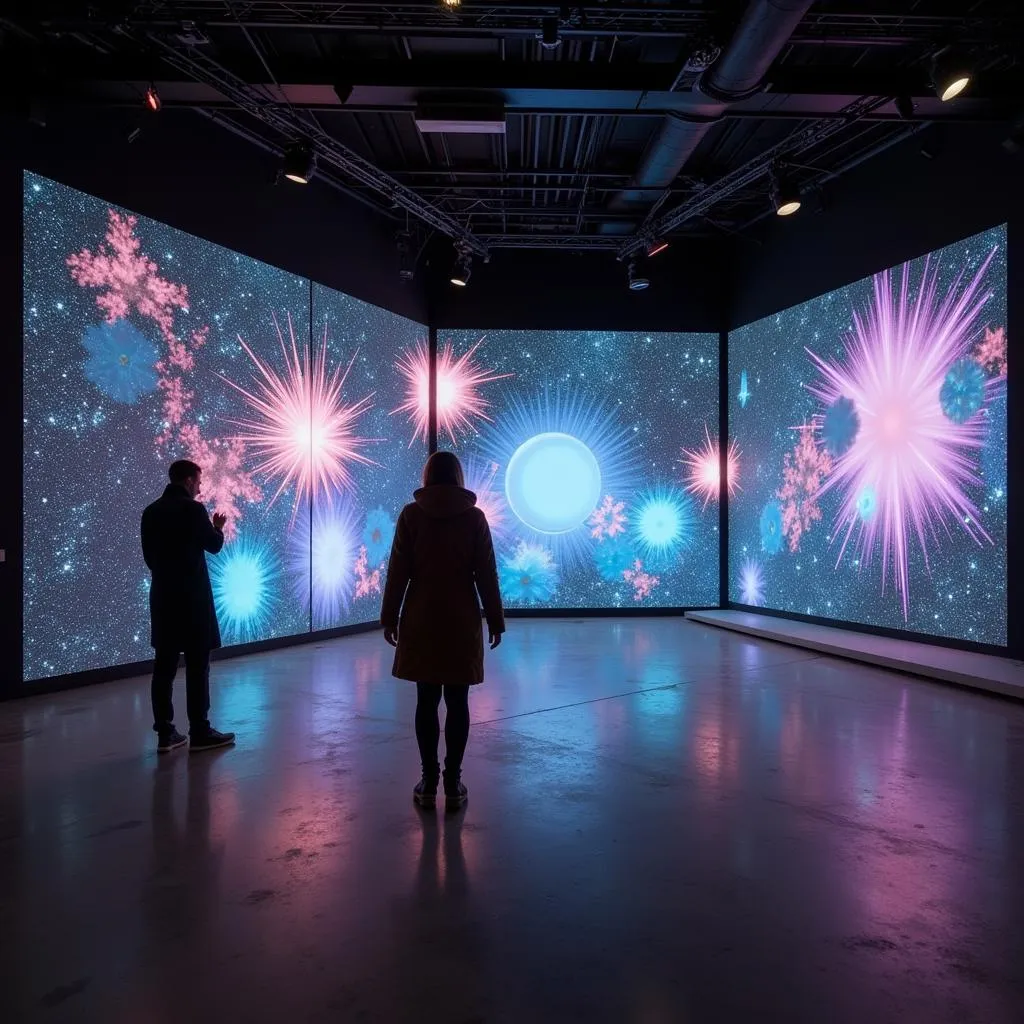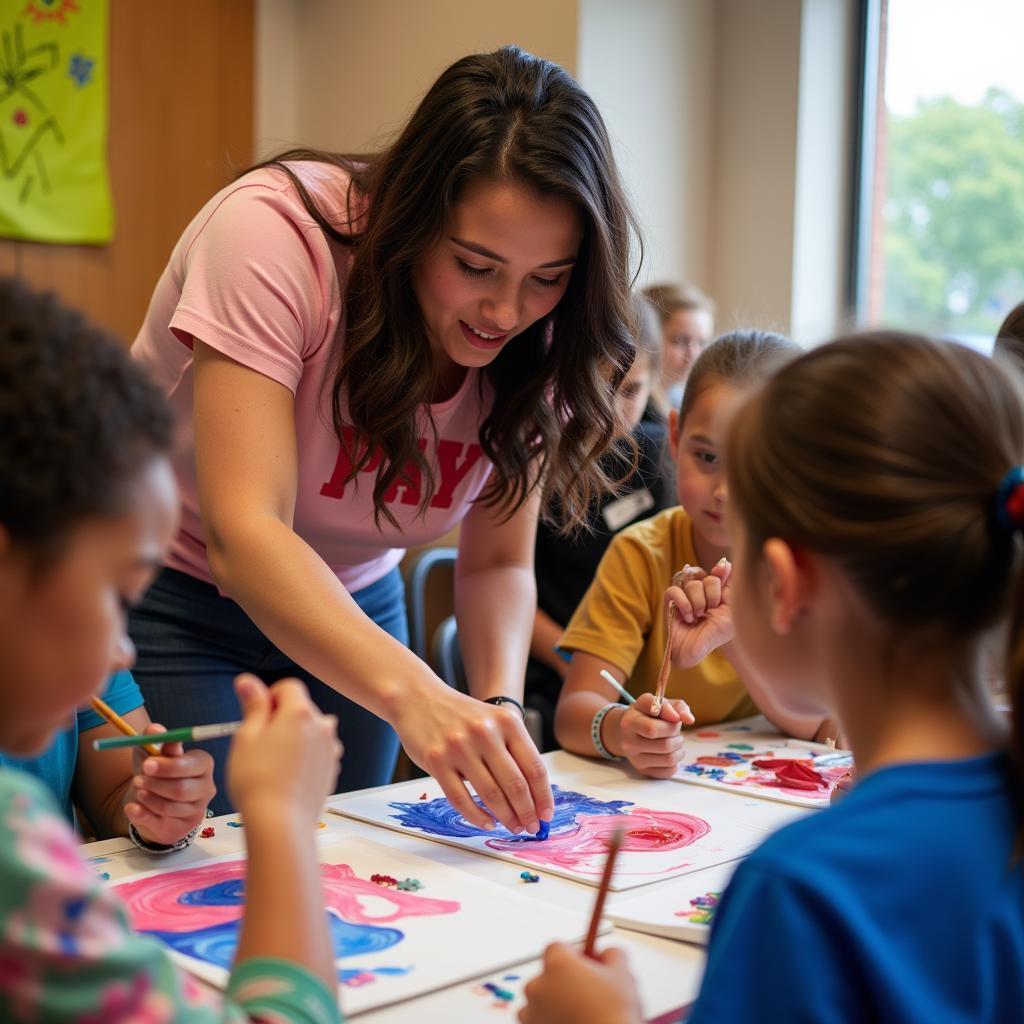Watercolor Snowflake Art: A Guide to Creating Delicate Winter Wonders
Winter’s crisp air and the sparkling beauty of snowflakes have captivated artists for centuries. And what better way to capture their ethereal charm than through the fluid, luminous medium of watercolor? In this guide, we’ll delve into the enchanting world of Watercolor Snowflake Art, exploring techniques, tips, and inspiration to help you create delicate winter wonders of your own.
Unleash the Magic of Watercolor Snowflakes
The beauty of watercolor snowflakes lies in their delicate details and the mesmerizing way they shimmer and glow. This art form is perfect for both beginners and experienced artists, as its forgiving nature allows for experimentation and exploration. Let’s embark on a journey into the world of watercolor snowflakes and discover the secrets to creating your own artistic winter wonderland.
Essential Tools for Your Watercolor Snowflake Adventure
To embark on your watercolor snowflake adventure, you’ll need a few key tools:
- Watercolor paints: Choose a set with a variety of cool blues, grays, and whites to create a realistic winter palette.
- Watercolor brushes: Invest in a selection of round, flat, and fan brushes to achieve different textures and sizes for your snowflakes.
- Watercolor paper: Opt for high-quality watercolor paper, as it can withstand multiple washes and ensure a smooth finish.
- Masking tape: Secure your paper to a drawing board using masking tape to prevent warping and ensure a clean edge.
- Pencil: Lightly sketch the snowflake design on your paper, using a soft pencil to create a faint guide.
- Eraser: Gently erase any pencil lines after you’ve finished painting.
- Palette: A palette is essential for mixing your colors and experimenting with different shades.
Mastering the Watercolor Snowflake Technique
Now, let’s dive into the exciting world of creating watercolor snowflakes. This process can be broken down into several steps:
1. Planning Your Design
Start by sketching a simple snowflake design. You can use reference images of real snowflakes or create your own unique patterns. Remember, simplicity is key, as intricate details can be challenging to paint with watercolor.
2. Mixing Your Watercolor Colors
Mix your colors on your palette, starting with a cool blue base. You can create different shades by adding white or a touch of gray. Remember, watercolor is all about layering, so you can create depth and richness by using multiple washes.
3. Applying the First Wash
Using a round brush, apply a thin wash of your lightest blue color to the entire snowflake outline. Allow it to dry completely before moving on to the next step.
4. Building Up the Details
Now, add a second wash of a darker blue to the center of your snowflake. Use a smaller brush to create delicate lines and details. Be sure to allow each layer to dry completely before adding the next.
5. Adding Highlights
Once the darker wash is dry, add highlights using white watercolor. You can create delicate lines or small dots to mimic the glistening effect of ice crystals.
6. Final Touches
Once your snowflake is completely dry, you can add additional details like a subtle background wash of gray or a light dusting of glitter to enhance its sparkle.
Expert Insights: A Master’s Perspective on Watercolor Snowflakes
“Watercolor snowflakes are a beautiful reminder of nature’s intricate beauty. Always allow each layer of paint to dry completely before applying the next, as this prevents color bleeding and ensures a clean, crisp finish.” – Emily Carter, Watercolor Artist and Instructor
“Don’t be afraid to experiment with different shades of blue and gray to create a unique and realistic snowflake. Watercolor is a forgiving medium, so don’t be afraid to make mistakes—it’s all part of the creative process!” – John Baker, Watercolor Artist and Author
Creating a Wintery Landscape with Watercolor Snowflakes
You can further elevate your watercolor snowflake art by incorporating them into a wintery landscape scene. Here are some ideas:
- Snowy Branches: Paint a delicate branch with a thin wash of gray or brown, and add a scattering of watercolor snowflakes along its length.
- Frosty Window: Create a scene of a frosted window with a light blue wash and add detailed watercolor snowflakes along the windowpane.
- Snow-Covered Forest: Use shades of blue, gray, and white to paint a forest scene with snow-covered trees and a flurry of watercolor snowflakes falling from the sky.
Frequently Asked Questions
1. Can I use acrylic paint instead of watercolor?
While acrylic paints are more opaque and vibrant, they are not as forgiving as watercolor. Watercolor is the preferred medium for creating delicate and ethereal snowflake designs.
2. How do I get rid of pencil lines after painting?
Gently erase any visible pencil lines using a soft eraser after your watercolor has completely dried. You can also use a kneaded eraser, which is less likely to smudge your paint.
3. How can I add sparkle to my watercolor snowflakes?
You can add a subtle sparkle by mixing a tiny amount of white glitter with your watercolor paint. Or, after your snowflake is dry, you can use a brush to carefully apply a light dusting of glitter to the highlights.
Let Your Creativity Bloom: Embrace the Watercolor Snowflake Journey
Watercolor snowflakes offer a captivating and expressive art form that allows you to create stunning visual representations of winter’s magic. From simple designs to intricate masterpieces, embrace the beauty of this art form and let your creativity bloom. With a little practice and a passion for winter’s ethereal charm, you can create your own winter wonderland with watercolor snowflakes.
Need help with your watercolor snowflake journey? Contact us at 02462573573 or [email protected]. We’re here to guide you every step of the way. Visit our website at Online Art workshops for more creative inspiration and helpful resources.


